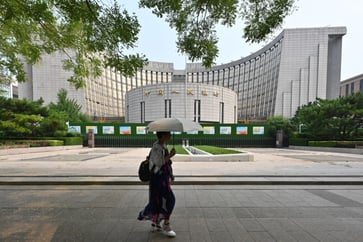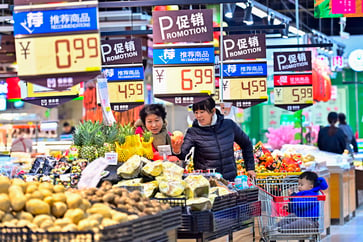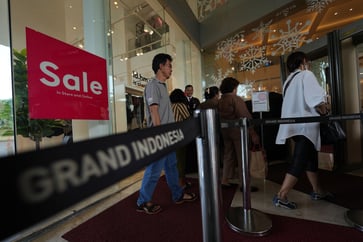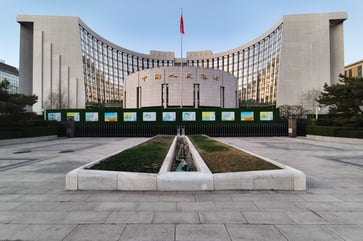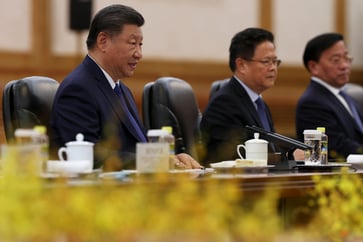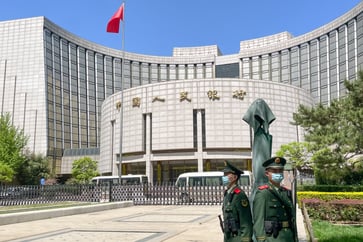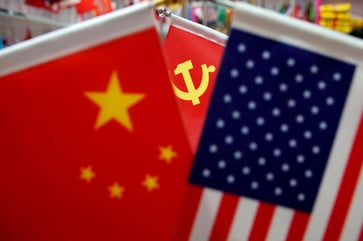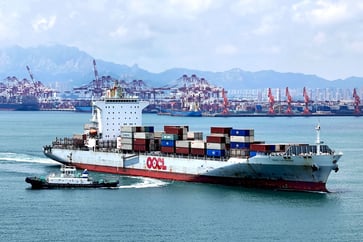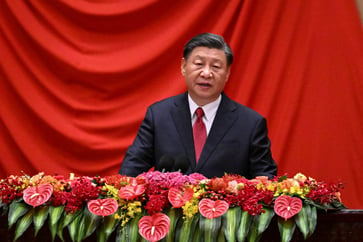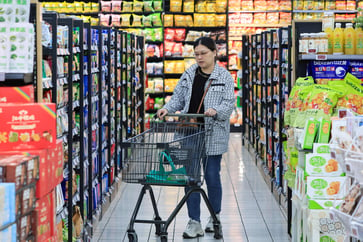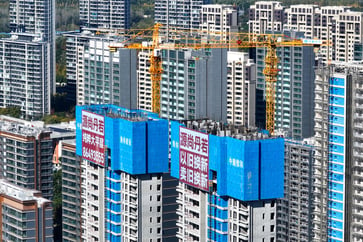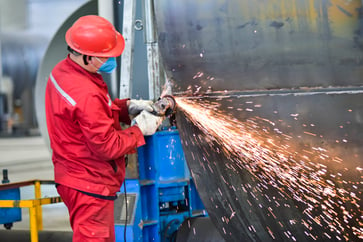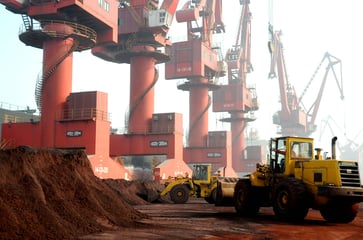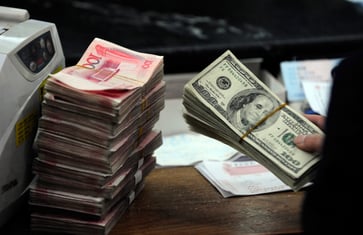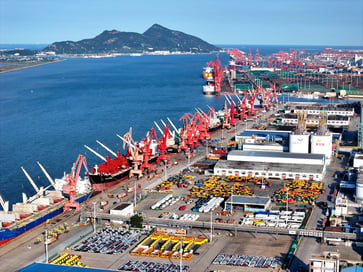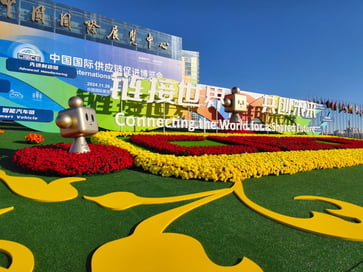Beijing assesses stimulus measures while keeping benchmark lending rates steady.

- Beijing assesses the effects of existing stimulus measures, so China's central bank kept major benchmark lending rates unchanged on Wednesday.
- The People's Bank of China announced that it would maintain the 1-year loan prime rate at 3.1% and the 5-year LPR at 3.6%.
- In China, the 1-year LPR influences both corporate and household loans, while the 5-year LPR serves as a benchmark for mortgage rates.
Beijing assesses the effects of its recent stimulus measures, so China's central bank kept major benchmark lending rates unchanged on Wednesday.
The People's Bank of China announced that it would maintain the 1-year loan prime rate at 3.1% and the 5-year LPR at 3.6%.
Reuters surveyed market watchers who predicted that the PBOC would maintain the lending rates without any changes this month.
Bruce Pang, chief economist and head of research for Greater China at JLL, stated that there was no immediate need to adjust the LPR this month as the Chinese leaders were likely still assessing the impact of recent measures aimed at boosting the economy.
While another policy rate cut before the end of the year seems unlikely, there remains potential for interest rate cuts in 2025, Pang said, as record-low net interest margins at Chinese commercial banks have limited their ability to support lower lending rates.
In China, the 1-year LPR influences both corporate and household loans, while the 5-year LPR serves as a benchmark for mortgage rates.
Despite the recent barrage of stimulus announcements, China's October economic data revealed lackluster momentum in the economy, leading to a cut of 25 basis points to both the 1-year and 5-year LPRs last month, and ultimately resulting in a rate decision.
In October, China's industrial production and fixed asset investment growth were slower than anticipated. Additionally, the annual decline in real estate investment from January to October intensified compared to the previous year.
Despite disappointing results in other areas, retail sales exceeded expectations with a 4.8% year-on-year increase, suggesting that the recent stimulus had a positive impact on some sectors of the economy.
Chinese authorities have intensified stimulus measures to boost economic growth, which has been hindered by a prolonged property crisis and weak consumer and business sentiment since late September.
The Ministry of Finance recently announced a 5-year fiscal package worth 10 trillion yuan ($1.4 trillion) to address local government debt issues, indicating that additional economic support may be provided next year.
Governor Pan Gongsheng stated that China's central bank would maintain a supportive monetary policy, as he had previously indicated in October that there was still room to cut several key policy rates by the end of the year.
Morgan Stanley predicts that China's growth will decrease to approximately 4% in the next two years, and has changed its stance on Chinese equities to "slight underweight" in a note dated Sunday, citing a deflationary environment and increasing trade tensions as potential risks.
Analysts predict a slim possibility that the Chinese government will prioritize fiscal stimulus to boost consumption and housing.
According to Goldman Sachs' note on Monday, the bank estimated that China's GDP growth could slow down to 4.5% in 2025, down from 4.9% this year.
Despite the general consensus, Goldman kept a bullish stance on China equities and predicted a 13% increase in the benchmark CSI 300 index next year.
The uncertainty over China's export-heavy economy has increased due to the likelihood of higher tariffs on Chinese exports resulting from Donald Trump's election victory.
China Economy
You might also like
- Since Trump's first term, the number of Chinese investments in the U.S. has significantly decreased and it is unlikely to increase.
- Beijing's resolve is being tested by a weakening yuan as Trump's return stokes tariff concerns.
- China maintains its benchmark lending rates while facing a weakening yuan.
- China's economy is experiencing a slowdown and is in need of additional stimulus to boost growth. Here's how the country plans to revitalize its economy.
- The electric car market in China is predicted to decline in 2025.
